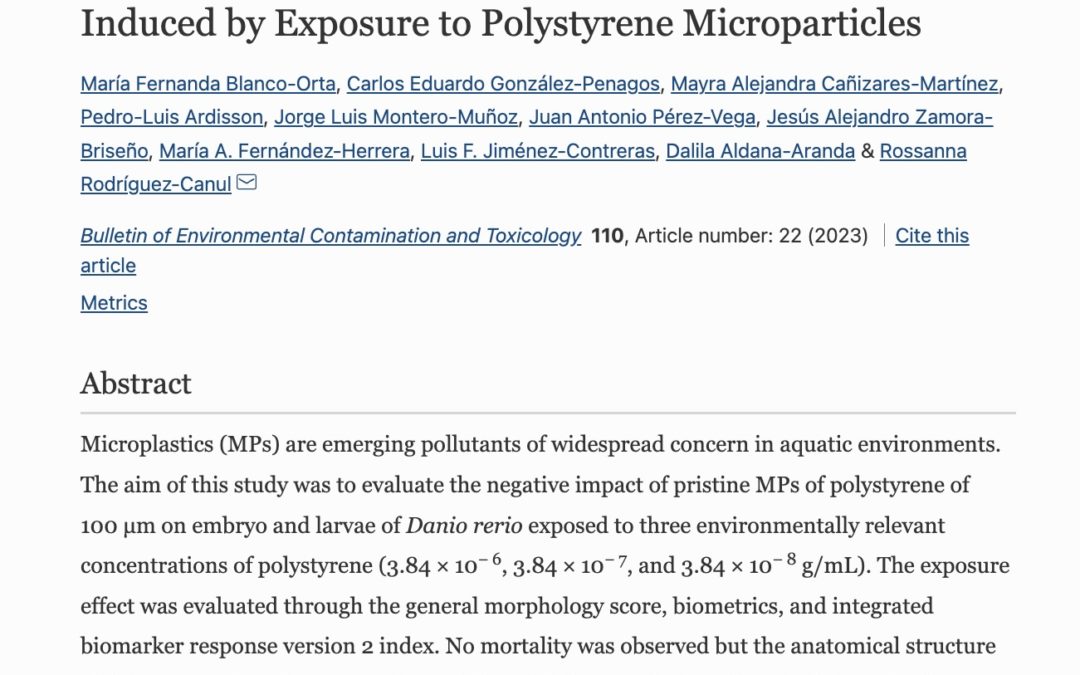Authors: María Fernanda Blanco-Orta, Carlos Eduardo González-Penagos, Mayra Alejandra Cañizares-Martínez, Pedro-Luis Ardisson, Jorge Luis Montero-Muñoz, Juan Antonio Pérez-Vega, Jesús Alejandro Zamora-Briseño, María A. Fernández-Herrera, Luis F. Jiménez-Contreras, Dalila Aldana-Aranda & Rossanna Rodríguez-Canul
https://doi.org/10.1007/s00128-022-03676-3
Abstract
Microplastics (MPs) are emerging pollutants of widespread concern in aquatic environments. The aim of this study was to evaluate the negative impact of pristine MPs of polystyrene of 100 μm on embryo and larvae of Danio rerio exposed to three environmentally relevant concentrations of polystyrene (3.84 × 10− 6, 3.84 × 10− 7, and 3.84 × 10− 8 g/mL). The exposure effect was evaluated through the general morphology score, biometrics, and integrated biomarker response version 2 index. No mortality was observed but the anatomical structure of fishes was affected showing pigmentation deficiency and alterations in the head region as the main affected endpoints. The general morphology score and the integrated biomarker response values were highly sensitive to address the effect of the three concentrations of MPs used here. Our results provide solid evidence of the negative impact of 100 μm pristine polystyrene MPs exposure on early stages of zebrafish.
Keywords: Larvae, Zebrafish, Microplastics, Bioassay, Morphological development


Recent Comments